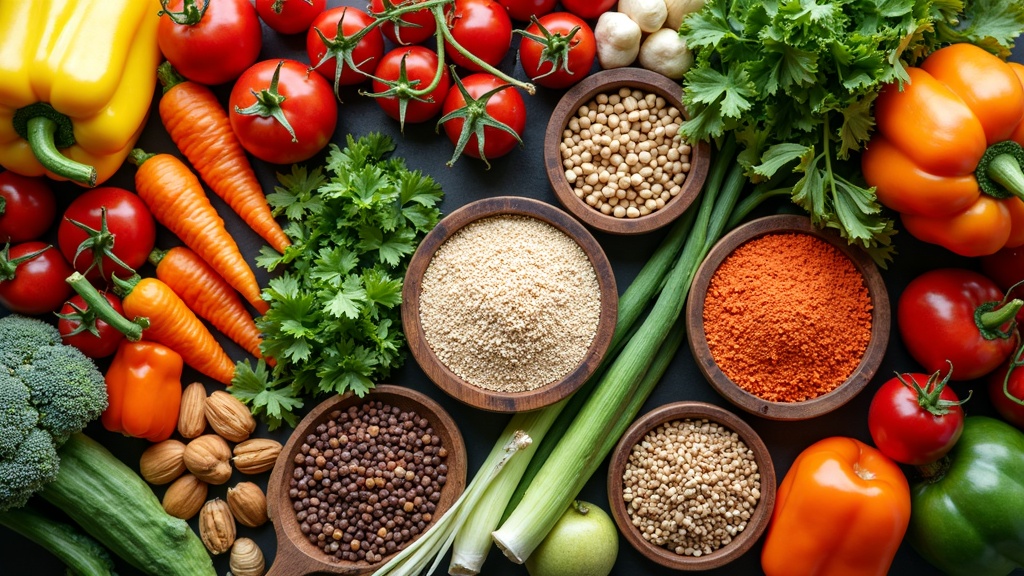Plantbased eating is getting more popular every year, and it’s in the spotlight for its effect on health, especially weight management.
When I first decided to check out swapping out more veggies and whole plant foods for my usual favorites, I was surprised by how it could actually help me keep my weight in check without having to obsess over every calorie.
If you’re thinking about making the switch or just adding a few more plantbased meals to your week, there are some helpful things to know about how this way of eating works when it comes to weight.

How PlantBased Eating Connects With Weight Management
Eating mainly plants usually means loading your meals with vegetables, fruits, whole grains, legumes, nuts, and seeds, and less emphasis on animalbased products.
This kind of eating isn’t exactly the same as vegan or vegetarian; it’s more about making plants the star of your plate most of the time, even if you still eat dairy or meat sometimes.
Choosing mostly plants can help with weight management because these foods are often high in fiber, water, and nutrients, while also being fairly low in calories.
That combination helps you feel full after eating, so you don’t end up snacking as much or going for seconds as often.
According to research from Harvard Health Publishing and the American Journal of Clinical Nutrition, people eating plantbased diets usually weigh less and have lower risks of obesity than those who follow more animalheavy diets (source, source).
First Steps To Starting PlantBased Eating For Weight Control
When you’re beginning a plantbased approach, you don’t need to overhaul your meals overnight.
Adding more plants can fit into any lifestyle, even if you’re not ready to give up meat or cheese completely.
Start by making smaller swaps and learning which foods keep you most satisfied.
- Focus on Fiber: Beans, lentils, oats, berries, and leafy greens keep you full longer. Fiber helps with digestion and can regulate blood sugar swings that might cause cravings.
- Try New Proteins: Tofu, tempeh, chickpeas, black beans, and even quinoa make filling sources. These foods bring protein and fiber together, making them extra helpful for weight control.
- Don’t Skip Healthy Fats: Avocado, nuts, seeds, and olive oil add flavor and satisfaction so you’re less likely to feel deprived.
- Fill Half Your Plate With Veggies: A simple rule is to make sure half of every meal is colorful veggies, leaving less room for highercalorie foods.
Everyday Advice For Achieving Weight Goals With PlantBased Meals
Sticking with plantbased meals can feel easier when you have tasty options and you’re not forcing yourself to eat foods you don’t actually like.
Here’s what worked for me and has been helpful for lots of people I know:
- Plan Your Meals: Have a few goto breakfast, lunch, and dinner ideas. Buddha bowls, veggie stirfries, and hearty salads can be put together quickly and are really satisfying.
- Watch Out For Processed Foods: Some vegan or plantbased packaged foods are sneaky with added oils, sugars, and salt. Whole foods tend to be more filling and lower in calories. Always check the ingredient label if you’re picking something off the shelf that’s marked “plantbased.”
- Experiment With Flavors: Use herbs, sauces, and spices to keep your meals interesting. Adding a little spice or using something like tahini, salsa, or a homemade vinaigrette can really transform simple plantbased dishes.
- Snack Smart: Sliced veggies with hummus, fruit with nut butter, or a handful of nuts curb hunger between meals without piling on lots of calories.
- Keep It Realistic: If you want dessert or your favorite comfort food, work it in mindfully. This type of balance is way more sustainable than strict food rules.
What To Know About Common PlantBased Eating Challenges
Switching your eating habits can come with a few bumps. Here are some challenges I faced and how I handled them:
- Staying Full: If you’re used to eating meat at every meal, you might find yourself hungry after a veggiebased salad. Add beans, quinoa, or roasted sweet potatoes. Roasted chickpeas make a crunchy topper that actually keeps you full.
- Finding Easy Recipes: Trying to cook complicated or expensive recipes every day is overwhelming. For most people, sticking to simple stirfries, soups, or grain bowls with whatever veggie is on sale keeps things lowstress.
- Handling Social Situations: Eating plantbased at a restaurant or family dinner can take a little planning. Check menus ahead of time or offer to bring a dish to share at gatherings.
- BudgetFriendly PlantBased Foods: Canned beans, frozen vegetables, and whole grains like brown rice or oats are usually inexpensive. You don’t need to spend big to eat well.
How To Get More Protein On A PlantBased Plan
Protein is one of the biggest questions people have about plantbased diets, and I wondered about it at first, too. Here are easy sources to pump up your intake:
- Beans and lentils (great in soups, salads, and tacos)
- Edamame and tofu (really versatile and take on any flavor)
- Whole grains, especially quinoa, farro, or barley
- Nuts and seeds (I like hemp seeds and peanut butter on oatmeal)
- Plantbased protein powders (helpful if you’re on the go or working out a lot)
Dealing With Cravings
Craving your old favorites is totally normal.
I’ve found that making healthier versions, like homemade fries with sweet potatoes or a chickpeabased pizza crust, helps when you want the comfort but still want to stay on track.
Balancing Nutrients
Some vitamins and minerals, like vitamin B12, iron, calcium, and omega3s, can be trickier to get from plants alone.
I use fortified nondairy milk, sprinkle flax or chia seeds on breakfast, and eat leafy greens every day.
Some people pick a multivitamin just to cover their bases. The Academy of Nutrition and Dietetics has good guides about these key nutrients.
None of these challenges have to get in your way if you plan ahead and set yourself up with easy, budgetfriendly meals and snacks.
Confidence grows with every new meal you check out.
Tips For Making PlantBased Eating Work LongTerm
If you want this way of eating to help with weight management for the long run, these tips can keep you motivated and help you avoid boredom:
BatchCook Staples: Cooking big portions of grains and beans ahead of time makes it simple to toss together bowls, wraps, or salads when you’re busy or just want an easy meal.
Learn a Few Sauces: A tasty sauce—think peanut sauce, chimichurri, or cilantrolime—makes any basic bowl or veggie dish a whole lot more exciting.
Mix Things Up Seasonally: Eating with the seasons is a good way to get plenty of variety without overthinking your meal plan.
Winter squash in the cold months, fresh berries, and tomatoes in the summer.
Keeping things interesting is probably the best way to avoid feeling stuck or deprived.
If you get into a rut, try one new fruit or vegetable each week, or check out international recipes to add some excitement.
Even something as simple as swapping your go-to breakfast for overnight oats or a smoothie bowl can make a difference.
Real World Results and Evidence
Plenty of studies back up the perks of plantbased eating for weight control.
According to findings published by the National Institutes of Health, people who stick with plantcentered diets often end up with lower body mass indexes (BMIs) and better overall metabolic health.
Another study in Nutrition Bulletin noted that switching meatheavy meals for plantbased swaps can be super helpful for people at risk of obesity or type 2 diabetes.
It’s not all about what you cut out; it’s about what you get from more plants, like fiber, phytonutrients, and vitamins that aren’t as common in ultraprocessed or animalheavy diets.
The more plants you eat, the bigger the variety of nutrients and flavors you’ll stumble upon.
Beyond the scale, a lot of people find that eating more plantbased makes them feel more energized and less sluggish after meals.
Swapping one meatbased meal a day for something plantforward can be a good place to start and still help you track down some of these benefits.
Frequently Asked Questions
Here are some common questions that come up when switching to plantbased eating for weight control:
Question: Can plantbased eating help with losing weight if I don’t cut calories?
Answer:
Yes, because the fiber and volume in plant foods keep you full, people tend to eat fewer calories naturally even without tracking or restricting.
Question: How quickly will I see changes if I switch to this style of eating?
Answer:
Most people notice changes within a few weeks, especially if they’re switching highcalorie foods for mostly whole plants. The timeline is different for everyone, depending on other lifestyle choices.
Question: Is plantbased eating safe for kids or teens?
Answer:
Yes, as long as meals are balanced and include fortified foods or supplements if needed. Check with a pediatrician or dietitian to make sure all nutrient needs are covered.
Final Thoughts
Focusing on plantbased meals is a pretty practical and sustainable strategy for managing weight.
Fiber keeps you full, it’s easy to find budget friendly staple foods, and you get the bonus of new flavors and variety.
For anyone looking to manage weight without obsessing over dieting or food rules, a plantforward approach can be both satisfying and real for longterm health.
Try new foods, have fun, and enjoy the perks of eating more plants as you go forward.
